 England, in the Middle Ages, was prone to imitate many of the diplomatic customs of France. In 1406 Charles VI of France had made the heralds of his household into a close body, giving them a charter of incorporation. Perhaps Henry V was influenced by the action of the French King. Possibly, if there had not been such troubled times in the 15th century, the French example would have been followed earlier in England. It was not until 1484 that Richard III incorporated the heralds of his court. They were given a charter with privileges and duties. They were also given a building in Cold Harbour, London, though on the accession to the throne of Henry VII a year later in 1485 they had to leave it and reside at a monastic establishment near Charing Cross until the reign of Edward VI in the mid 16th century. They then moved into a building on the site of the College of Arms in Queen Victoria Street , and the present building dates from after the great fire of London in 1666.
England, in the Middle Ages, was prone to imitate many of the diplomatic customs of France. In 1406 Charles VI of France had made the heralds of his household into a close body, giving them a charter of incorporation. Perhaps Henry V was influenced by the action of the French King. Possibly, if there had not been such troubled times in the 15th century, the French example would have been followed earlier in England. It was not until 1484 that Richard III incorporated the heralds of his court. They were given a charter with privileges and duties. They were also given a building in Cold Harbour, London, though on the accession to the throne of Henry VII a year later in 1485 they had to leave it and reside at a monastic establishment near Charing Cross until the reign of Edward VI in the mid 16th century. They then moved into a building on the site of the College of Arms in Queen Victoria Street , and the present building dates from after the great fire of London in 1666.
In the charter of Richard III which incorporated the College of Arms, reference is made to John Writh, Garter King of Arms of the English, Thomas Holme, Clarenceux King of Arms for the southern part of England, John More, Norroy King of Arms for the northern parts, and Richard Champney, Gloucester King of Arms for Wales. Garter, Clarenceux and Norroy are the titles borne by the three Kings of Arms at the College to this day. William Berry the registering clerk to the College of Arms for 15 years in the early 19th century wrote in his Encyclopedia Heraldica “ That intimate connexion with France, which was occasioned by the claims of the English princes to the Crown of that country, seems to have led to the establishment of heraldic officers, with the names and capacities which they still possess; at least, such establishment is contemporaneous with the invasions of France. Edward III appointed four of the six heralds who form a part of the present constituted body: his successor Richard II appointed other officers and these were collected into a college and acted together by order of Henry V, and by Richard III were granted a charter and very extensive privileges.” The blows dealt to the nobility of the country by the Wars of the Roses accelerated the growth in the power of the royal heralds. Many nobles lost their lives, many were convicted and imprisoned and deprived of their titles. Accordingly the status of the private herald became precarious and very soon it was only in the royal court that heralds flourished. To this day the officers of the College of Arms, thirteen in all, are members of Her Majesty’s household and not civil servants, or government appointees.
 COLLEGE OF ARMS GRANT OF ARMS
COLLEGE OF ARMS GRANT OF ARMS

